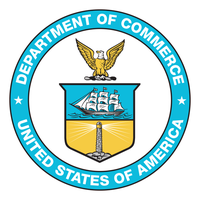The Trade Tug-of-War: Navigating Tariffs and Tensions Between the U.S. and Canada
May 7, 2025, 5:42 am

Location: United States, District of Columbia, Washington
Employees: 10001+
Founded date: 1903
Total raised: $4M
In the world of trade, the U.S. and Canada are like two dancers in a complicated tango. One misstep can lead to a stumble, and right now, both nations are feeling the pressure. The recent surge in the U.S. trade deficit, hitting a record high, paints a vivid picture of this ongoing struggle. As businesses and consumers scramble to adapt to new tariffs, the stakes have never been higher.
In March 2025, the U.S. trade deficit soared to $130.7 billion, a figure that sent shockwaves through the economy. This spike came as companies rushed to import goods before President Trump’s new tariffs took effect. The anticipation was palpable, like a storm brewing on the horizon. Businesses stocked up on capital goods, automotive parts, and electronics, fearing that the tariffs would soon choke off their supply chains.
But not all imports surged. Industrial supplies, such as metals and crude oil, took a hit. The tariffs on steel and aluminum began to bite, and service-based imports, like travel, fell as well. It was a mixed bag, reflecting the chaotic nature of the current trade landscape. The White House insists that these tariffs will close the long-standing trade deficit, a gap that has persisted since 1975. However, economists warn that the consequences could be dire.
The reality is that tariffs are a double-edged sword. While they may protect domestic industries, they also raise costs for businesses that rely on global supply chains. This, in turn, leads to higher prices for consumers. The surge in imports in March masked a troubling trend: the U.S. economy contracted by 0.3% in the first quarter of 2025. The trade deficit, like a heavy anchor, weighed down economic growth.
As the dust settles, the question remains: what will happen next? The second quarter may see a reversal in import growth, potentially easing some pressure on GDP. But the long-term effects of these tariffs are still unfolding. The global economy is interconnected, and disruptions in one area can ripple across the entire system.
Meanwhile, the political landscape is equally fraught. President Trump’s recent meeting with Canadian Prime Minister Mark Carney in the Oval Office highlighted the stark differences between the two leaders. Trump’s aggressive stance on tariffs and trade left little room for compromise. He even suggested that Canada could become the 51st U.S. state, a comment that drew sharp rebukes from Carney.
The meeting was a study in contrasts. Trump, known for his bombastic style, oscillated between charm and confrontation. Carney, on the other hand, maintained a calm demeanor, focused on protecting Canadian interests. The stakes were high, with both leaders aware that the future of trade relations hangs in the balance.
Carney’s government is keen to secure the best deal for Canada, especially in light of the tariffs that have strained the relationship. The Canadian economy is heavily reliant on trade with the U.S., with nearly 77% of its exports heading south of the border. The two nations share a complex web of economic ties, from energy to automotive manufacturing.
Yet, Trump’s rhetoric has raised alarms. He has painted Canada as a “socialist regime” feeding off American resources, a narrative that has fueled tensions. The U.S. Commerce Secretary’s comments only added fuel to the fire, suggesting that Canada is not a reliable partner. This kind of language can poison negotiations and make finding common ground nearly impossible.
As the trade war escalates, both countries must navigate these turbulent waters carefully. Carney’s visit was a necessary step, but it also highlighted the challenges ahead. The Canadian Prime Minister is under pressure to protect jobs in key sectors like automotive manufacturing, while Trump is determined to reduce the trade deficit, even if it means imposing steep tariffs.
The future of U.S.-Canada trade relations is uncertain. Will cooler heads prevail, or will the tensions escalate further? The outcome will depend on the willingness of both leaders to engage in meaningful dialogue. As they grapple with these issues, the economic consequences will be felt by businesses and consumers alike.
In the end, the trade relationship between the U.S. and Canada is like a fragile bridge. One wrong move could send it crashing down. Both nations must tread carefully, balancing their interests while seeking a path forward. The world is watching, and the stakes could not be higher. The dance continues, but the rhythm is off. It’s time for both sides to find their footing before the music stops.
In March 2025, the U.S. trade deficit soared to $130.7 billion, a figure that sent shockwaves through the economy. This spike came as companies rushed to import goods before President Trump’s new tariffs took effect. The anticipation was palpable, like a storm brewing on the horizon. Businesses stocked up on capital goods, automotive parts, and electronics, fearing that the tariffs would soon choke off their supply chains.
But not all imports surged. Industrial supplies, such as metals and crude oil, took a hit. The tariffs on steel and aluminum began to bite, and service-based imports, like travel, fell as well. It was a mixed bag, reflecting the chaotic nature of the current trade landscape. The White House insists that these tariffs will close the long-standing trade deficit, a gap that has persisted since 1975. However, economists warn that the consequences could be dire.
The reality is that tariffs are a double-edged sword. While they may protect domestic industries, they also raise costs for businesses that rely on global supply chains. This, in turn, leads to higher prices for consumers. The surge in imports in March masked a troubling trend: the U.S. economy contracted by 0.3% in the first quarter of 2025. The trade deficit, like a heavy anchor, weighed down economic growth.
As the dust settles, the question remains: what will happen next? The second quarter may see a reversal in import growth, potentially easing some pressure on GDP. But the long-term effects of these tariffs are still unfolding. The global economy is interconnected, and disruptions in one area can ripple across the entire system.
Meanwhile, the political landscape is equally fraught. President Trump’s recent meeting with Canadian Prime Minister Mark Carney in the Oval Office highlighted the stark differences between the two leaders. Trump’s aggressive stance on tariffs and trade left little room for compromise. He even suggested that Canada could become the 51st U.S. state, a comment that drew sharp rebukes from Carney.
The meeting was a study in contrasts. Trump, known for his bombastic style, oscillated between charm and confrontation. Carney, on the other hand, maintained a calm demeanor, focused on protecting Canadian interests. The stakes were high, with both leaders aware that the future of trade relations hangs in the balance.
Carney’s government is keen to secure the best deal for Canada, especially in light of the tariffs that have strained the relationship. The Canadian economy is heavily reliant on trade with the U.S., with nearly 77% of its exports heading south of the border. The two nations share a complex web of economic ties, from energy to automotive manufacturing.
Yet, Trump’s rhetoric has raised alarms. He has painted Canada as a “socialist regime” feeding off American resources, a narrative that has fueled tensions. The U.S. Commerce Secretary’s comments only added fuel to the fire, suggesting that Canada is not a reliable partner. This kind of language can poison negotiations and make finding common ground nearly impossible.
As the trade war escalates, both countries must navigate these turbulent waters carefully. Carney’s visit was a necessary step, but it also highlighted the challenges ahead. The Canadian Prime Minister is under pressure to protect jobs in key sectors like automotive manufacturing, while Trump is determined to reduce the trade deficit, even if it means imposing steep tariffs.
The future of U.S.-Canada trade relations is uncertain. Will cooler heads prevail, or will the tensions escalate further? The outcome will depend on the willingness of both leaders to engage in meaningful dialogue. As they grapple with these issues, the economic consequences will be felt by businesses and consumers alike.
In the end, the trade relationship between the U.S. and Canada is like a fragile bridge. One wrong move could send it crashing down. Both nations must tread carefully, balancing their interests while seeking a path forward. The world is watching, and the stakes could not be higher. The dance continues, but the rhythm is off. It’s time for both sides to find their footing before the music stops.
